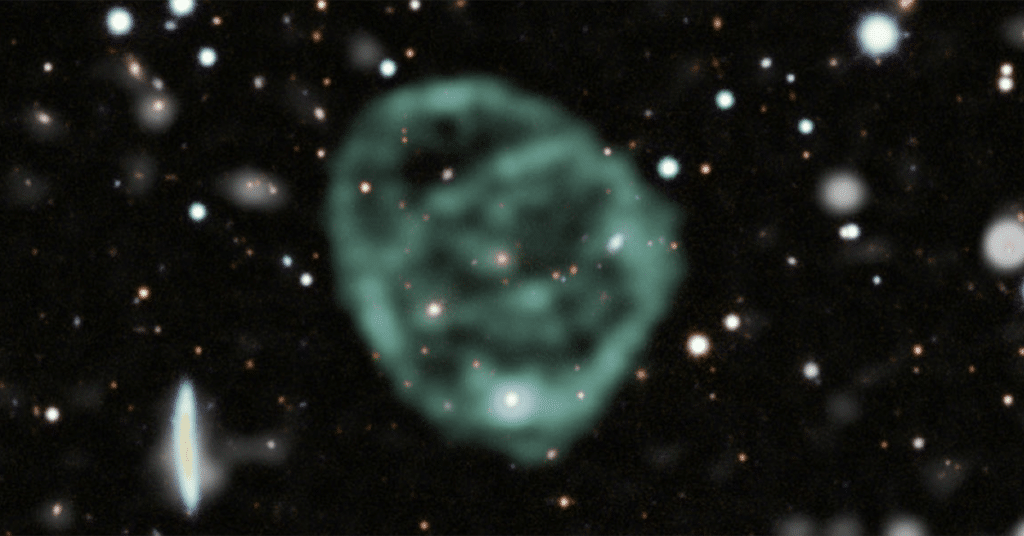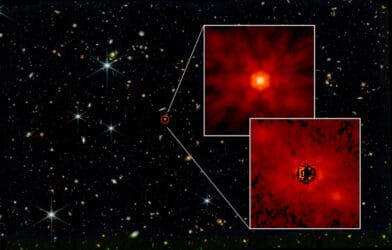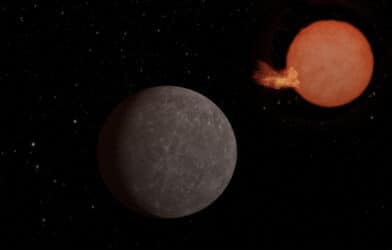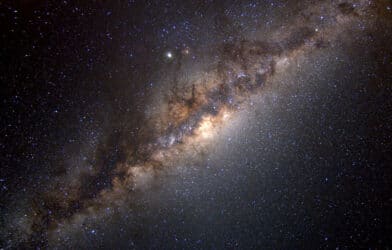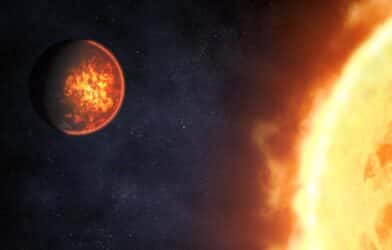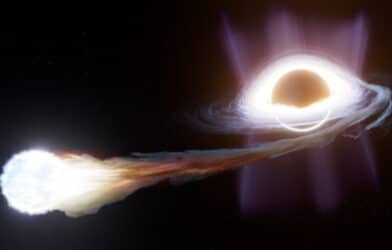Cue David Bowie’s “Space Oddity.” In what is being hailed as a remarkable discovery, astronomers have identified the likely source of mysterious, enormous circles observed in the cosmos. These billion-year-old “odd radio circles” (ORCs), first detected in 2019 by the Australian Square Kilometer Array Pathfinder (ASKAP) telescope, have puzzled scientists due to their massive size, encompassing entire galaxies within their perimeters.
University of California-San Diego scientists suggest that these circles are the result of outflowing galactic winds generated by “starburst” galaxies, where star formation occurs at an exceptionally high rate.
“These galaxies are really interesting,” says study author Alison Coil, professor and chair of the Department of Astronomy and Astrophysics at UCSD, in a university release. “They occur when two big galaxies collide. The merger pushes all the gas into a very small region, which causes an intense burst of star formation. Massive stars burn out quickly and when they die, they expel their gas as outflowing winds.”
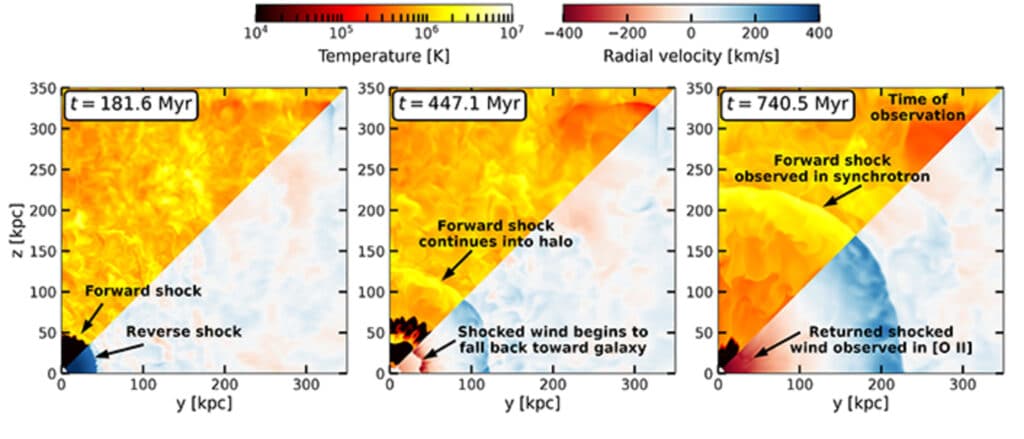
Technological advancements enabled ASKAP to detect these ORCs, which are enormous in scale, spanning hundreds of kiloparsecs (one kiloparsec equals 3,260 light years). For comparison, the Milky Way galaxy is about 30 kiloparsecs across. The origin of these ORCs was uncertain, with various theories proposed, including planetary nebulae and black hole mergers.
Coil’s team focused on ORC 4, the first ORC observable from the Northern Hemisphere. Utilizing an integral field spectrograph at the W.M. Keck Observatory, they discovered a significant amount of highly luminous, heated, compressed gas within ORC 4, far exceeding what is typically seen in average galaxies.
Further investigation using optical and infrared imaging data revealed that the stars inside the ORC 4 galaxy were around 6 billion years old.
“There was a burst of star formation in this galaxy, but it ended roughly a billion years ago,” explains Coil.
Study co-author Cassandra Lochhaas, a postdoctoral fellow at the Harvard & Smithsonian Center for Astrophysics, conducted computer simulations to replicate the ORC’s characteristics. The simulations indicated that outflowing galactic winds operated for 200 million years before ceasing. When the wind stopped, a forward-moving shock propelled high-temperature gas out of the galaxy, creating a radio ring, while a reverse shock sent cooler gas falling back onto the galaxy. This entire process played out over 750 million years, aligning with the estimated age of the stars in ORC 4.
“To make this work you need a high-mass outflow rate, meaning it’s ejecting a lot of material very quickly. And the surrounding gas just outside the galaxy has to be low density, otherwise the shock stalls. These are the two key factors,” explains Coil. “It turns out the galaxies we’ve been studying have these high-mass outflow rates. They’re rare, but they do exist. I really do think this points to ORCs originating from some kind of outflowing galactic winds.”
Coil emphasized that ORCs provide a unique opportunity to study these winds through radio data and spectroscopy.
“This can help us determine how common these extreme outflowing galactic winds are and what the wind life cycle is,” says Coil. “They can also help us learn more about galactic evolution: do all massive galaxies go through an ORC phase? Do spiral galaxies turn elliptical when they are no longer forming stars? I think there is a lot we can learn about ORCs and learn from ORCs.”
The study is published in the journal Nature.
